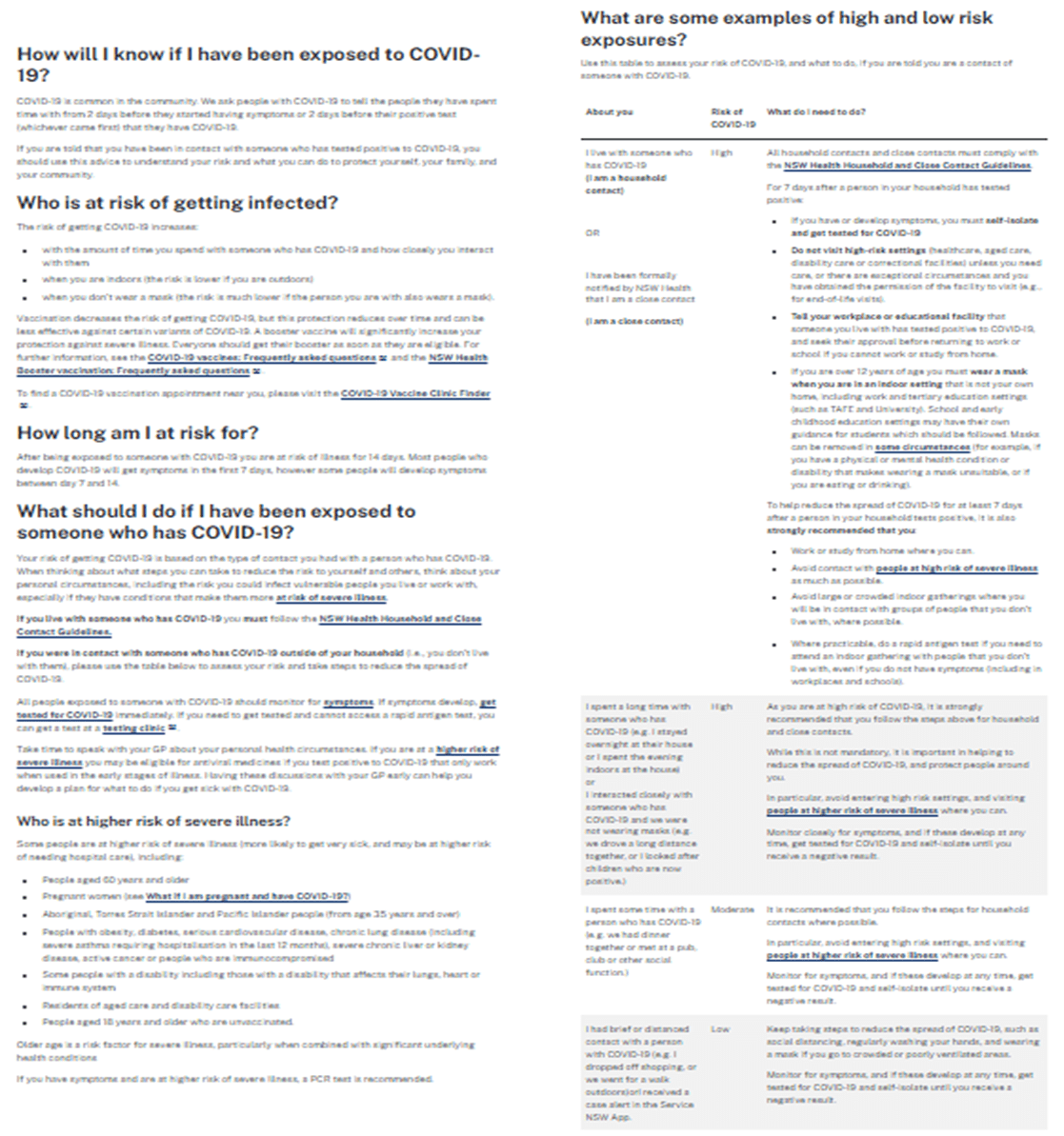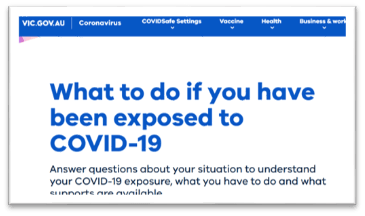The behavioural challenge
During the COVID-19 pandemic, Victorians needed to understand what they needed to do when they were exposed to COVID-19. Complex and changing rules around different types of exposure sites and whether one was a close contact or not, made it hard for people to sort through the information to find what was relevant to them.
We know that processing information is effortful, so when presented with too much information there is a tendency to switch off (we call this experiencing “cognitive overload”). Particularly during a stressful time (such as believing they might have been exposed to COVID-19), people need simplified and tailored information so they can find what they need to know quickly and easily, and ensure they get the support they need to stay safe.
What we did
While all the information about what to do if you were exposed to COVID-19 was available on the coronavirus.vic.gov.au website, there was a lot to go through and not all of it would apply to an individual depending on their specific circumstances. We worked with the Department of Health to create a short ‘decision tool’ in the form of a questionnaire to help people navigate this information.
A decision tool helps avoid cognitive overload by creating a framework to help people make a decision or work through a large amount of information quickly to inform them on what to do. This could be in the form of a flow chart or diagram to break down a complicated process, or a simple ‘Yes/No’ questionnaire that can help them work out what information applies to their specific circumstance. They also help by:
- streamlining information (removing information that isn’t relevant to the individual)
- simplifying information (using plain language and user-centred examples)
- minimising the effort of relating abstract rules or conditions to the user’s personal situation.
In a nutshell, this simple tool condensed a raft of information to provide people with only the rules that were relevant to their situation – minimising the cognitive burden of having to read through all of the information available.
As well as providing tailored information about people’s isolation requirements, the tool prompted people to consider additional supports available to them, such as isolation payments.
Below is an example of a website with a similar layout to the COVID-19 website before the decision tool. While all the information was provided in plain English, users had to scroll down through all the information to find which rules were relevant to them:

Below is a snapshot the decision tool:

What were the outcomes
The tool was:
- used 23,000 times in its first 10 weeks
- distributed easy to understand information to support Victorians to engage in critical protective behaviours.
Thanks
We thank our partners at the Department of Health.
Updated